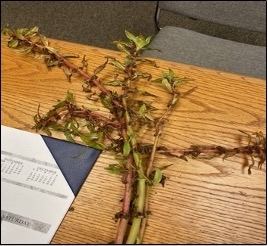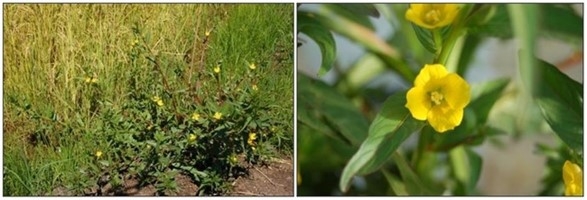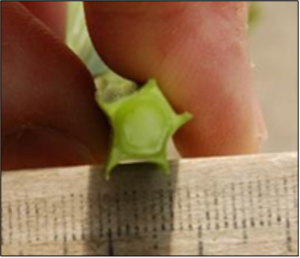“White Water Fire” (Bergia capensis)

From Butte County Agricultural Commissioner's office:
A weed sample collected in Butte County on September 19, 2023, was submitted to the California Department of Food and Agriculture (CDFA) botany lab for identification. The sample was identified as “White Water Fire” (Bergia capensis). Notes from the CDFA lab indicated that this is the first record of the plant in California and possibly the USA. CDFA has assigned a temporary Q rating, pending California pest rating proposal and public comment period to establish a permanent rating.
The sample was collected from a rice field and was found growing inside the field. It was not growing on banks or in ditches, it appears the preferable habitat is rice fields and marshy areas. It looks similar to; redstem (Ammania spp.) but the stem itself is much larger in diameter and less dense. Currently, there is little information globally on the plant; how invasive it is and how it impacts rice fields. The plant is native to Africa and China, and has been identified in parts of Central America.Since the initial identification, the Butte County Department of Agriculture has surveyed additional rice fields and did not find it in any other locations. One of the common ways of spread is the cultivation of rice. As of this date it has only been found in three checks of one rice site.
As with all noxious weed species, in commercial agricultural settings it is important to follow best management practices, this may include roguing field of species prior to harvest and cleaning/sanitizing of equipment post-harvest.
As more information is gained from partners at CDFA, the County Agricultural Commissioner's office will disseminate information to all interested parties.
From UCCE:
Kassim Al-Khatib is currently working on developing information for herbicide control of this weed (using currently registered rice herbicides). An update will be forthcoming at the winter grower meetings. Stay tuned!
Winged Primrose Willow (Ludwigia decurrens)
Winged primrose willow (WPW) is rated a Category A pest by the California Department of Food and Agriculture (CDFA), meaning that it is subject to enforcement action if found in a field. Its presence in a seed field also disqualifies that field from seed production. It was first found in Butte County rice fields in 2011. Since then, it is not known to have spread into other counties, but it is still found along major irrigation canals and thus has the potential to move.
It starts flowering in July or August, so the big, yellow flowers should be easy to spot if you have it in your field. It tends to grow in drained areas, or along field margins (levees, irrigation ditches, etc.) The seed pods, roots, and stems can float, so until it is eradicated, there is a chance that it could end up in other areas outside of Butte County. It propagates by seed, but parts of stems or roots can re-grow into plants.
Herbicide applications are effective when the weed is small, but will not be effective as the plants grow taller (more than 1 foot tall).
Effective herbicide applications are:
- Early water active herbicides:
- Bolero Ultramax
- Cerano
- Granite GR
- Follow-up foliar
- Early: Sandea, Londax
- Late: Grandstand or Grandstand/Propanil mix
The only means of dealing with it when it is large is by pulling it out and disposing of it. Disposal should be into a trash can, not on field edges.

To distinguish from common primrose, the WPW has 4 petals (see Photo 2) and the common primrose has 5 petals. Both are yellow in color. The winged primrose stem has wings on the stem (see Photo 3) in cross-section.

As always, please be on the lookout for unusual weeds, and report them to your local Farm Advisor (Michelle Leinfelder-Miles in San Joaquin, Luis Espino in Butte or Glenn, or Whitney Brim-DeForest in Sutter, Yuba, Placer or Sacramento).
Original source: UC Rice Blog, Dec. 20, 2023
Author - CE Rice and Wild Rice Advisor, Master Gardener Advisor, UC Integrated Pest Management Program Afilliate